Warren Feeney – 6 November, 2013
The scale of SCAPE 7's ambitions invite comparison with the visionary aspirations of the Russian Constructivism and Suprematism in post-revolution USSR. Art would change the world. Kasimir Malevich maintained that after the Old Testament came the New, then Communism and then Suprematism. The elegant and minimalist design of SCAPE's branding and the cover to its catalogue could have come from the workshops of El Lissitzky or Rodchenko.
Christchurch
Dan Arps, Fiona Connor, David Cross, Phil Dadson, Rachael Dewhirst, Shaun Gladwell, Rob Hood, Roslisham Ismail aka Ise, Mischa Kuball, Maddie Leach & Jem Noble, Julia Morison, Miranda Parkes, Zina Swanson, Hector Zamora and Wayne Youle
Public Art Christchurch Biennial
Curated by Blair French
27 September - 9 November 2013
If it is possible to maintain that site is essential to the context and reading of a public work of art then SCAPE 7’s Public Art Biennial in Christchurch set itself a number of formidable challenges in 2013. The site is a central city in which nearly 80% of its buildings have been demolished and the reconstruction process is just beginning.
As further streets are opened up it is possible to walk into the heart of the city from at least three directions. However, allow plenty of time and be prepared to get lost, redirected or walk into corners. In spite of the welcome access, central Christchurch still feels impenetrable. Possibly because it is now a construction site. A noisy, disorientating maze with a wealth of vacant spaces, road blocks, detours and no-entry sidewalks. There are only a few moments of respite for social interaction or community engagement - the retail spaces in Cashel and New Regent streets, the intersection of High and Tuam streets and the Pallet Pavilion on Victoria Street.
SCAPE 7 curator Blair French acknowledged the challenges, confronting its programme and how Scape intends to provoke, enlighten and entertain the local community in Volume One of its catalogue. This year’s programme is made up of eleven new works, two of which will remain permanent in the city. According to French, SCAPE 7 is informed by a ‘new particularity and urgency… in the aftermath of the Christchurch earthquakes…’ 1. He considers the role of public art in this precarious setting, and in doing so, also makes additional demands on its programme by proposing that work by selected artists may adopt complementary and paradoxical roles. With public spaces in an evolving state of reuse and renewal, art has the opportunity to benefit communities, yet remain ‘distinct from any specific social or civic situation’ - or capitulating to a ‘will to authority’. In this instance, art assumes its accustomed role as ‘outsider’ and provocateur.
There are also expectations that an ephemerality, implicit in the restricted timeframe and changing location of a number of the works, will resonate in a community all too conscious of the transient nature of human activity: ‘[Inner Christchurch is] an environment marked with the traces of… absent forms of architecture’ and ‘public works of art [in SCAPE’s programme]… make their mark without leaving a ‘heavy footprint.’ 2.
These are significant and complex claims to be making about art’s potential to influence: nurturing well-being, engaging meaningfully with site and community, eco-friendly, socio-political, provocative, entertaining, and operating alongside and outside the agendas of central and local government. It is further stated: ‘SCAPE 7 will inevitably have a role in… discussion [about urban redevelopment] and [the] rebuilding process simply by its presence as a process and a material event in the city.’ 3. This is a big ask. Is it possible to consider, reflect, and value any ‘moments of beauty, magic and hope,’ 4. - as the catalogue states - in the middle of seemingly perpetual and substantial demolition?
The scale of SCAPE 7’s ambitions invite comparison with the visionary aspirations of the Russian Constructivism and Suprematism in post-revolution USSR. Art would change the world. Kasimir Malevich maintained that after the Old Testament came the New, then Communism and then Suprematism. This association with SCAPE may not be as far apart as it might appear. The elegant and minimalist design of SCAPE’s branding and the cover to its catalogue could have come from the workshops of El Lissitzky or Rodchenko.
The irony of the title of the essay ‘Treading Lightly’ which introduces SCAPE 7 is inescapable. Apparently conscious of this, the catalogue acknowledges the full implications of the state of the city in an essay by Head of Landscape Architecture at Lincoln University, Jacky Bowring. ‘The Sublime, the Surreal and the Melancholy: Surveying the Setting for SCAPE 7,’ describes a garden city’s Armageddon: ‘This city was shaken violently until the middle fell apart and the surrounding suburbs began melting back into the swamps. The Port Hills grew by nearly half a metre. The cathedrals collapsed and the statues fell from the pedestals…. Christchurch has become…. a place of dreams and nightmares.’ 5.
What chance does art stand in such a world, particularly when it is made public? Art in a community space is truly democratic, open to appreciation and derision. If it is to connect meaningfully with audiences, its location must be orchestrated with purpose, tending towards spaces that encourage community gathering, reflections and conversations. And there is also the contention that since the late 20th century art has become incapable of influencing any social change. Robert Hughes argued that art is essentially politically impotent. It was hard to think of any [visual] work of art that had saved the life of ‘one Jew, one Vietnamese, one Cambodian’.
So how to measure the success of SCAPE 7? In the first instance, it is does feel like a realisation of its predecessor, SCAPE 6, (an event twice postposed and eventually split between Christchurch and Auckland) and it is worth noting that in spite of the demands SCAPE6 faced in 2011, it had presented Christchurch with its most animated and shrewd public artwork. Anton Parson‘s Passing Time encourages rediscovery and surprise each time it is seen, persistently revitalising and animating the spaces around St Asaph and Madras streets.
In spite of the concentration and complexity of agendas that SCAPE 7 has set itself, there are works that seem to almost effortlessly fulfil its ambitions. Zina Swanson‘s performance-based Can anybody hear me? features hypnotist Reg Blackwood who over the past five weeks has asked invited guests under hypnosis (Guerrilla Gardner, Kerry Swanson, Serra Kilduff, Celia Rachid Casbatiu and Di Lucas to date), to reveal the thoughts of plants they were seated close to, entering their natural world. It was an understated performance with a matter-of-fact credibility. Not because of any belief in the disclosure of a biological specimen’s feelings, but because it acted as a revelation about fundamental relationships between humankind and the natural world, while touching upon an anthropomorphism that seems to incessantly inform humanity’s perceptions of the world. Can anybody hear me? also reasserted the integrity of Swanson’s practice. Well-known for her installations and drawings centred upon fictitious botanical species, these performance added richly to an existing and substantial body of work.
Similarly, Phil Dadson‘s Bodytok directed attention to our relationship with nature and ourselves. The self-evident pleasure of the participants in this series of videos of people making noises with various parts of their bodies, was reflected back immediately, leaving the gallery visitor enriched. Not one participant failed to look with pride at the camera at the end of their performance, whether belching, whistling or slapping their body with the hands or making noises with their armpits. Bodytok shifted perceptions about the human body in a way that revealed a connectedness to self and - in its invitation to reflect on the physicality of human behaviour - a sense of disconnection from the body.
In a number of ways, Shaun Gladwell‘s Inflected Forms is the most traditional public artwork in SCAPE 7. An object with a refined sense of classicism, it resides within the parameters of tradition sculpture, yet it also this other thing - a skateboard ramp. Formal and elegant, an object of considered beauty and a welcome interruption to the building site on the corner of High Street and Cashel Street. Its use by local skateboarders, possibly unaware of its status as art, changes perception of what public art might be. Inflected Forms achieved what many artists could only hope their work might do. It represented a seamless and meaningful relationship between community and the arts. A municipal resource, bringing people together for recreation and interaction with one another.
Miranda Parkes‘ coloured billboard screen, Fielder, close to the Bridge of Remembrance on a corner section of grass and garden, similarly demonstrated an integration of site, environment and object. Acting as a kind of geometric abstraction of nature, Fielder, played location and aesthetic off against one another, enriching the park and garden setting it was located in.
Other sites and contributions in SCAPE 7 were sometimes more problematic. For the SCAPE 7 visitor, the inner city was challenging - difficult to navigate without getting lost and frequently characterised by extensive and wearying detours. Reflection and contemplation, or consideration of the political, social, philosophical or aesthetic were somewhat muted in the process. It just became frustrating.
Or maybe the experience of SCAPE 7 was a metaphor for life in the city itself. Moments of inspirations, amidst frustration and disappointment. Some works seemed overwhelmed or ignored by their location. Dan Arps and Fiona Connor‘s Common Coop Co-op sited in a temporary, make-shift park on High Street felt like its moment had passed. Arguably, there now needs to be more going on in public art in Christchurch than a vacant site, hosting reconfigured found-objects.
Yet, Rob Hood‘s Duck Soup did manage to address such issues with a work that rejuvenated itself beyond the gallery space, in a way that was entirely unanticipated. The premise of a pole with a bucket implicitly full of water about to topple and drench the unsuspecting victim below, sited close to the collapsed Copthorne Hotel seemed resigned to its fate, poignant rather than humorous. Watching the pole and bucket sway in the wind, Hood’s sculpture acted like a bogan’s version of Len Lye’s Wind Wand. A do-it-yourself, self-depreciating, ‘up-yours’ visual retort.
Mischa Kuball’s presentation of 22 street lamps from as many cities to Christchurch is one of two permanent works from SCAPE 7, (the other being Julia Morison‘s Tree House for Swamp Dwellers), and at this stage the verdict is out. It is an appreciative gift to Christchurch, although the presence of only one of the twenty-two lamps makes its influence difficult, if not impossible, to currently measure.
So to what extent has SCAPE 7 risen to the challenges it set itself? Locating a public art programme in a site that Bowring describes as an ‘awe of nothingness’ 6. was always going to be near impossible to compete with. Yet, SCAPE 7 does embody moments of beauty and magic. These were primarily in sites where artworks did not need to compete with the ‘sublime, surreal and melancholy,’ of the city. SCAPE 7’s accompanying education programme and discussions on urban redevelopment and the rebuild are also to be commended. An expanded series of lectures and an education programme that stretched well beyond previous biennials.
In a wider context, SCAPE 7 represents one of a number of arts organisations and events that have stepped up to raise the profile of the art over the past 30 months in Christchurch: Gap Filler, the Outer Spaces programme, Festa (the festival of transitional architecture), Art Beat, Life in Vacant Spaces, Rise (a soon-to-take-place graffiti art project by international artists), and numerous independent arts projects, have seen public art visible in a way that is without precedent in the city. Of course, this is entirely opportune. As the rebuild commences, there are just too many vacant spaces to be gainfully occupied. In the absence of alternatives, the arts have established a visible public presence. Yet, whether this has meant that the use of public space as the ‘key context for audience encounters with contemporary art in Christchurch’ 7. has been to arts advantage or otherwise is questionable. Putting together the words ‘community’ and ‘art’ does not necessarily always make for a great match. There are less than a handful of significant public artworks in the city, and in fact, the Ilam Campus Gallery, Jonathan Smart Gallery, the Physics Room and The National have all curated consistently engaging and challenging exhibitions throughout the past year, informed, as would be expected, by a welcome degree of quality control.
In raising these issues, it must be noted that the next twelve months for the arts in Christchurch will be critical to their future. As liberating and distinctive as the ‘pop-up’, transitional and temporary have been over the past two years, there is an urgent need for certainty and permanence - strategies that articulate long-term development and progress - the establishment of new infrastructures, new spaces and new arts institutions. Such certainty would provide a practical response and an enduring contribution towards Christchurch residents’ experience of the arts and their limitless potential for ‘beauty, magic and hope.’
Warren Feeney
1. Blair French, ‘Treading Lightly,’ SCAPE 7 Public Art Christchurch Biennial Volume One: Guide/Reader, Christchurch: Scape Public Art, 2013, p. 13.
2. Ibid
3. French, ‘Treading Lightly,’ p. 15.
4. Ibid.
5. Jacky Bowring, The Sublime, the Surreal and the Melancholy: Surveying the Setting for Scape 7,’ SCAPE 7 Public Art Christchurch Biennial Volume One: Guide/Reader, p. 19.
6. Bowring, p. 21.
7. French, ‘Treading Lightly,’ p. 14.
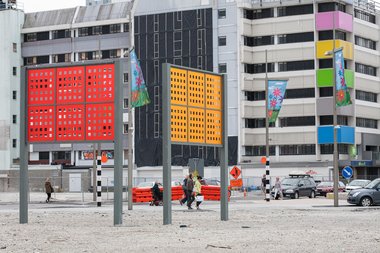
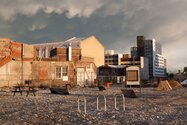
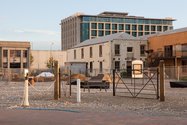

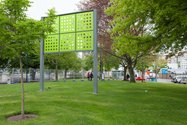
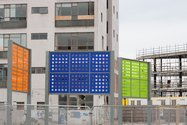
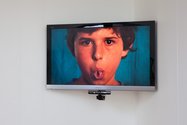

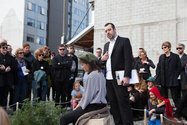
 Two Rooms presents a program of residencies and projects
Two Rooms presents a program of residencies and projects Advertising in this column
Advertising in this column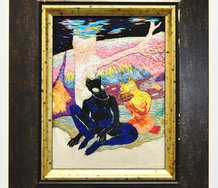
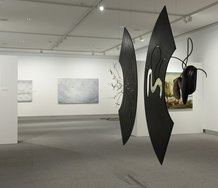
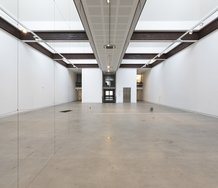

This Discussion has 0 comments.
Comment
Participate
Register to Participate.
Sign in
Sign in to an existing account.